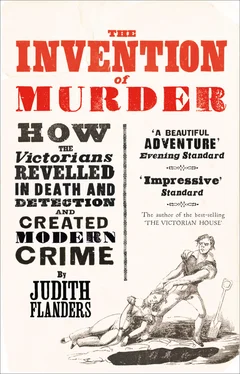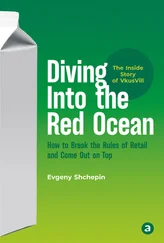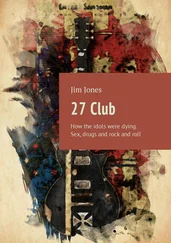Greenacre was also popular in penny-gaffs. James Grant, a journalist, reported that ‘the recent atrocity known by the name of the Edgeware murder, was quite a windfall’ to them, theatres choosing ‘the most frightful of the circumstances’ to display ‘amidst great applause’. Current murders were popular because, as the audiences already knew the stories, they could be pared down to the most sensational episodes. This suited the gaffs, which crammed in as many daily shows as the market would bear – one performer remembered that he did twenty-one shows in twelve hours on Boxing Day in 1835 – and therefore concision was essential. Likewise, for current events, a script could be dispensed with and the company simply ad-libbed: ‘Number one is told, “You, sir, play the hero and have to frustrate the villain in all and every scene. You, number two, are the villain, and must pursue the lady, make love, stamp in fury when you are refused. You, number three, are the juvenile … make love, embrace, weep and swear to die for her you love … Now you, madam … you are the heroine, and must rave and roar when you refuse the villain’s proffered love, and mind you scream right well.” ‘
The middle classes loved to condemn this sort of working-class entertainment, believing it led to vice. In 1844 the chaplain of the Brixton House of Correction said that ‘almost all’ of the boys there had first been led astray by visits to penny-gaffs or fairs, where they had watched depictions of crimes ‘calculated to inflame the passions’. Yet no one regarded Greenacre as fearful in the way Burke and Hare had been fearful; for some reason, he was funny. Greenacre’s whole life had been marked by ‘treachery and deception – in small matters as well as great’, claimed John Bull: when he took Mrs Brown’s head on the omnibus, it solemnly revealed, he had asked what the fare was. ‘Sixpence a head, sir.’ He paid his sixpence, ‘thus paying only for one head instead of two’. Bell’s Life filled its correspondence columns with answers to readers’ questions about the betting on whether or not Greenacre would hang. (These columns printed only the editor’s answers; the questions must be inferred.) A report on a prize fight in the same paper uses the word ‘Greenacre’ quite casually to mean a blow – ‘the Black thought he could not do better than again try to pop in another “Greenacre” under Preston’s left ear …’ Even the intelligentsia joined in: Jane Carlyle thought a portrait of her husband Thomas had ‘a gallows-expression … I have all along been calling it Greenacre-Carlyle’. And the Revd R.H. Barham’s Ingoldsby Legends commemorated Greenacre in jingly nursery-rhyme rhythms:
… So the Clerk and the wife, they each took a knife,
And the nippers that nipp’d the loaf sugar for tea;
With the edges and points they severed the joints
At the clavicle, elbow, hip, ankle, and knee.
Thus, limb from limb they dismember’d him
So entirely, that e’en when they came to his wrists,
With those great sugar-nippers they nipp’d off his ‘flippers’
As the Clerk, very flippantly, termed his fists.
… They determined to throw it where no one could know it, Down the well, – and the limbs in some different place.
… They contrived to pack up the trunk in a sack,
Which they hid in an osier-bed outside the town,
The Clerk bearing arms, legs, and all on his back,
As that vile Mr. Greenacre served Mrs. Brown …
The crowd at Greenacre’s execution was large, vocal and perfectly good-humoured, purchasing ‘Greenacre tarts’ from a pie-seller while they waited. Seven weeks later, Princess Victoria became Queen Victoria, and public opinion began to change.
*A harmanbeck is a constable. A buffer might, as in our current use of the word, mean a doddery old man, or it might be one of two slang words in use at the time: a dog, or ‘A Rogue that kills good sound Horses only for their Skins’. Either way, Thurtell was not happy. I have been unable to discover why a green coat is a term of contempt. Perhaps they were old-fashioned, reinforcing the ‘old man’ element of the insult?
*One legal historian has suggested that this verdict had more to do with a private feud between the insurance company’s lawyer and the judge than with the merits of the case.
*This example of servant humour provided the middle classes with much merriment. Even forty years later, Dickens knew his readers would recognize the reference in Our Mutual Friend when he suggests that a Fat Lady at a fair kept up her weight ‘sustained upon postponed pork’.
*This meeting has been much disputed, and Egan may simply have worked from press reports and information supplied by sporting friends.
*The Coburg changed its name to the Royal Victoria (the Vic) in 1833. Later in the century it became known fi rst colloquially, then formally, as the Old Vic, which it remains today.
*All plays were subject to governmental oversight, and all theatres had to submit their scripts to the offi ce of the Lord Chamberlain before performances could be licensed. Historians have cause to be grateful for this censorship. The Lord Chamberlain’s offi ce kept the scripts, and they are frequently the only surviving copies, particularly for plays produced at the minor theatres. Much of the material that follows relies heavily on the Lord Chamberlain’s Plays, now held in the British Library, and only slightly the worse for wear after being kept for a century or so in a coal cellar in St James’s Palace.
*The author of the Surrey’s play is always listed as ‘unknown’, but a seemingly hitherto unnoticed letter from the journalist Leman Blanchard, dated 23 April 1883, has survived in the British Library: ‘The piece called The Gamblers [was] hashed up by Milner if I remember rightly.’ Blanchard cannot actually have ‘remembered’ the production at all, as he was born only in 1820, but he was a professional playwright by 1839, and his father, William Blanchard, was a comic actor before him, so he may well have heard the play spoken of. Certainly its notoriety long outlived its run at the Surrey.
*Some of these items retained a posthumous glamour. In the twentieth century Norwich Public Record Offi ce was the proud owner of a pair of scissors said to have been Thurtell’s in his cloth-merchant days, and of his original certifi cate in bankruptcy.
*Almost every report agrees that Thurtell read his defence, and read it well. Yet a contemporary scholar thinks that Thurtell’s letters ‘show him to have been semi-literate’ at best, and suggests that Egan may have had a hand in his defence speech. Perhaps Thurtell, a lover of theatre, had memorized it.
*Probert’s escape via immunity was short-lived. In 1825 he was convicted of stealing a horse and hanged at Newgate. A broadside claimed that so many people attended his execution that ‘a boy actually walked from one side of the street to the other, on the heads of the people’.
†Mulready also sketched both Hunt and Probert. The drawings are now in the Victoria and Albert Museum.
§Thurtell lived on among the sporting set. In 1868, at a dog show, a ‘champion stud’ included the pups Palmer, Probert and Williams. For Palmer, the Rugeley poisoner, see below, pp.258ff. Williams may either be the Ratcliffe Highway murderer, or one of a trio of murderers in the Burke and Hare style, who was executed for the murder of an Italian beggar-boy in 1831.
*Jack Ketch was a seventeenth-century hangman, and his name was used colloquially to mean any executioner.
*Bulwer-Lytton (1803–73) was born Edward George Earle Lytton Bulwer, and until 1838 he was known as Edward Lytton Bulwer. On his father’s death he became Sir Edward Bulwer, and in 1843 he added his mother’s maiden name, Lytton, to become Sir Edward Bulwer-Lytton. Ultimately he became 1st Baron Lytton of Knebworth. For simplicity, I refer to him as Bulwer throughout. Unlike Bulwer, Hannah Jones’s success was one of scale, not fi nance or renown: she wrote and sold widely, but was, according to The Times, given a pauper’s burial. For more on penny-bloods, see pp.58–60.
Читать дальше












